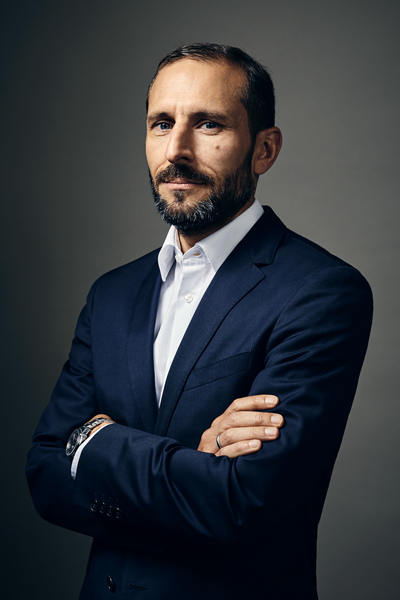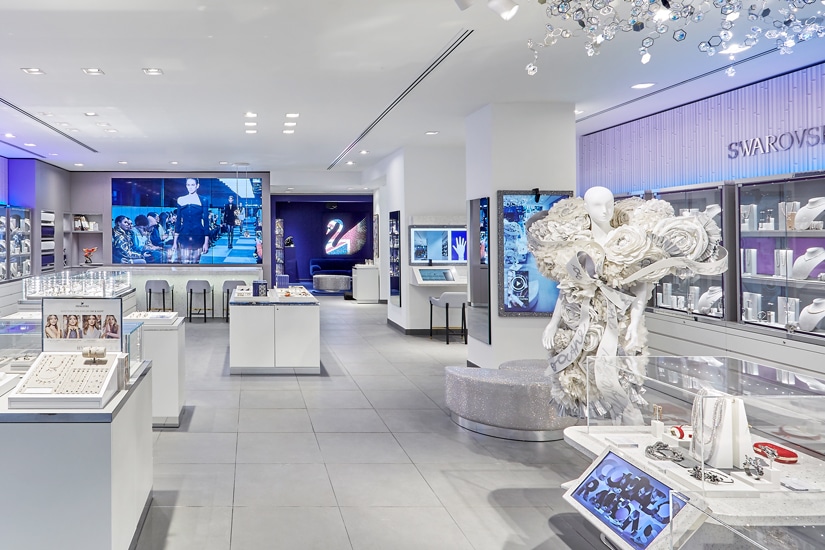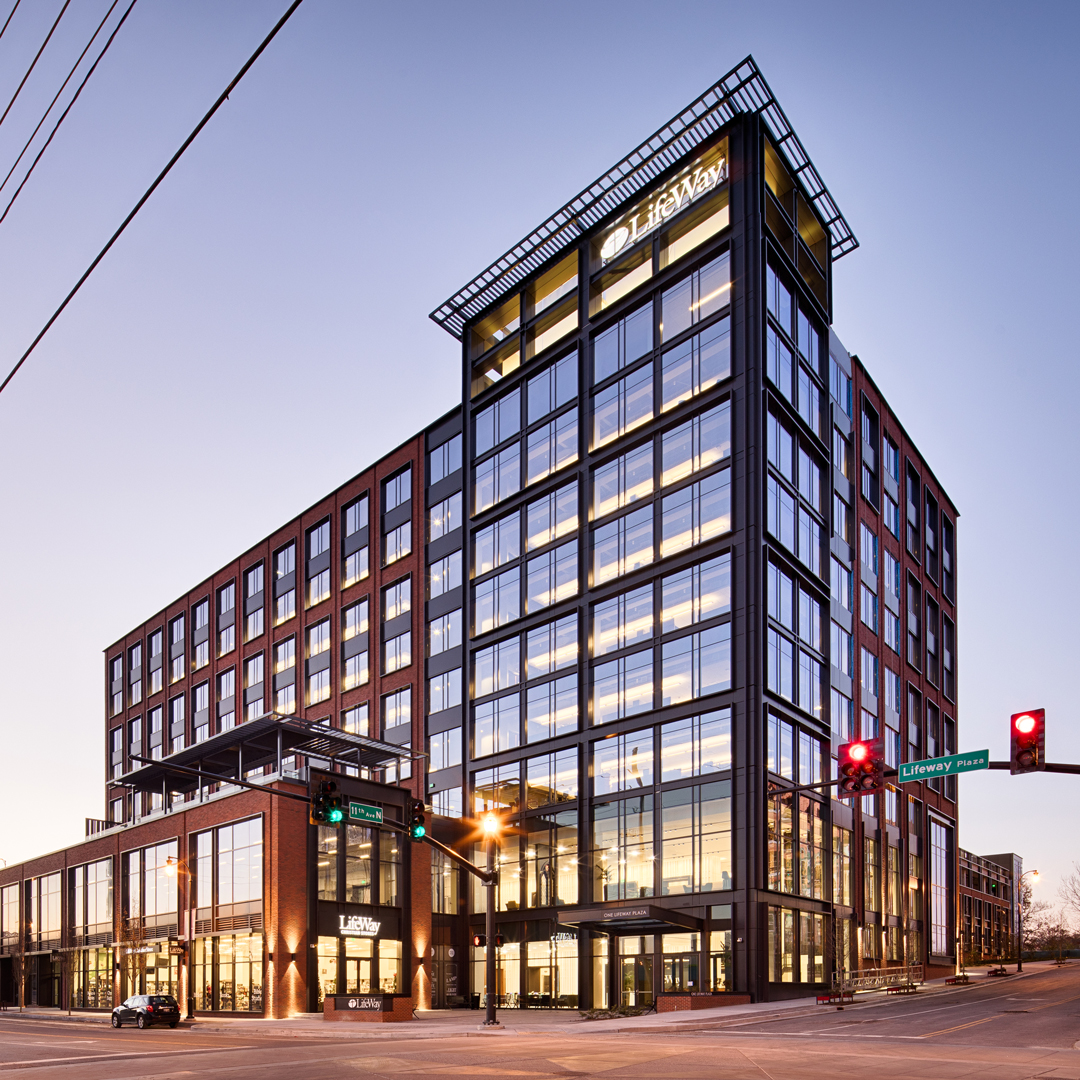Light is life—we need it to make us feel alive. Few businesses understand this better than Swarovski. While the leading manufacturer of loose crystal and fashion jewelry has evolved since its founding in 1895, by embracing new technologies and collaborating with creative talent, its mastery of light and unique sparkle has always remained center stage—whether through crystals and gems featured on Michael Jackson’s white gloves, on the star atop the Rockefeller Center Christmas Tree, or on a bride’s wedding ring.
“[Swarovski founder] Daniel Swarovski wanted to create a diamond for every woman,” says Jochen Schmidt, vice president of retail real estate and store development. “This is something which is still inherent in our ways, how we work, and how we look at the customer. This is why we’re here: to create a more sparkling world.” Today the multibillion-dollar company reaches more people than ever, with more than 3,000 locations and an enduring brand that extends to 170 countries.

When Schmidt arrived at Swarovski in 2008, he set up supply chains and trained teams for the retail architecture function. A decade later, he now leads the combined department of distribution and real estate and store development from the international company’s offices in Zürich, Switzerland. In this role, Schmidt says, he aims to create store experiences that reflect the brand heritage, the craftsmanship, and the values Swarovski represents.
Considering Swarovski’s legacy spans more than a century, Schmidt’s goal is relatively new. The company opened its first jewelry store in Hong Kong in 1998, but today it does around a thousand refurbishments and openings each year, from small multibrand corners to large stores. “It’s fascinating to work on this global level,” Schmidt says. “You learn every day—about culture, changing consumer behavior, and the changing retail environment.”
The worldwide scope requires a system as polished and intricate as Swarovski’s crystals. That’s why Schmidt splits his time between designing new store concepts or single elements and maintaining existing locations. Also, as part of his distribution and real estate concerns, Schmidt and his team analyze geomarketing data to determine “white spots” (hubs for potential store openings) and they prepare guidelines, processes, and tools for a global use.
That fast pace sets the tone for his international team of 80 leaders, who enact those timelines simultaneously. Together, Schmidt and his team are bringing concepts to the value-engineering stage and building small multibrand accounts and big flagship stores. “I’m very competitive; I love sports,” Schmidt says. “I really want to win, including winning the heart of the consumer.”
Yet Schmidt keeps his eye on the long-term strategy, a link, perhaps, to his years competing in triathlons. Now, sports drive the energy and inspiration he applies at Swarovski. “Even though triathlons are an individual sport, it’s about teamwork, being a great coach and teammate,” he says. “You learn a lot about how to motivate yourself, the discipline to get up early in the morning, always with the aim to improve.”
Schmidt continues to run almost daily, which he says increases his focus. “During the day, you can lose sight of the main things you want to achieve,” he says. “Sometimes it’s good to disconnect, even if it’s through a run.”
Prior to Swarovski, Schmidt worked as head of sales and marketing for Baukreativ, an agency specializing in retail design and development for high-profile clients such as Giorgio Armani, Coach, Under Armour, and Swarovski. Schmidt was invited to join the latter company during a conference one night, and after a few months of consideration, he says, the promise of international retail development was simply too fascinating to pass up.
Schmidt’s role proved crucial in the creation of Swarovski’s contemporary stores. “It’s about the sparkle, the superior craftsmanship, and the mastery of light refraction that is unique to the Swarovski brand,” he says. “You need to translate this into store content, into an environment where you really stage and bring those products to life.” That’s why each store features signature Swarovski elements such as a crystal swan and chandelier.

Schmidt believes that an effective store is much more than the store sign or the architecture. “It’s a multisensorial experience,” he says. “It’s the music we want to play, the smell inside the store—do we work with one, or is there no smell?—how the staff members are dressed, and how they approach the customer.” These are just a few of the considerations Schmidt and his team discuss each time a new store concept is in development.
Concept to completion can take around four months for standard designs. Yet Swarovski also produces special stores, which are highly stylized concepts with innovative ideas. For example, when a forerunner store recently opened in Times Square, in New York City, Schmidt’s team, in cooperation with the designer, Cao/Perrot, had to create an environment that stood out among the lights and noise of the urban jungle.
To do so, the team hung crystalized wire clouds from the ceiling, both inside and outside, creating a sense of peace and tranquility. For the first time, Schmidt also added crystals to the storefront, which shimmer whenever a breeze passes. At another location, a “forerunner store” on Oxford Street in London, Schmidt has designed a Union Jack crystalized swan, a collaboration with London-based designer Simon Costin, based on the best-selling Remix collection. Local designers will also be essential for an upcoming store in Chengdu, China, Schmidt says.
Schmidt employs state-of-the-art technology to complement—not compete with—such design elements. His team is incorporating augmented reality into stores to experiment with how customers interact with products as well as devices and to eventually make checkout faster. “We need to create an experience for the consumer that he or she can’t get online,” he says. Schmidt aims to make customers feel welcome as soon as they step through the door, to ensure the right information is easily available, and to create a seamless shopping experience.
Swarovski storefronts are at the forefront of a new era of brick-and-mortar retail—one that Schmidt is repositioning at the junction of art and technology. Yet at the brand’s core is a beautiful material that can be applied to so many products, and that versatility will continue Swarovski’s success far into the future. “We have shown this over the last 100 years, and we will show it in the next 100 years,” Schmidt says. “Crystal is here to stay and fascinate people for years to come.”


